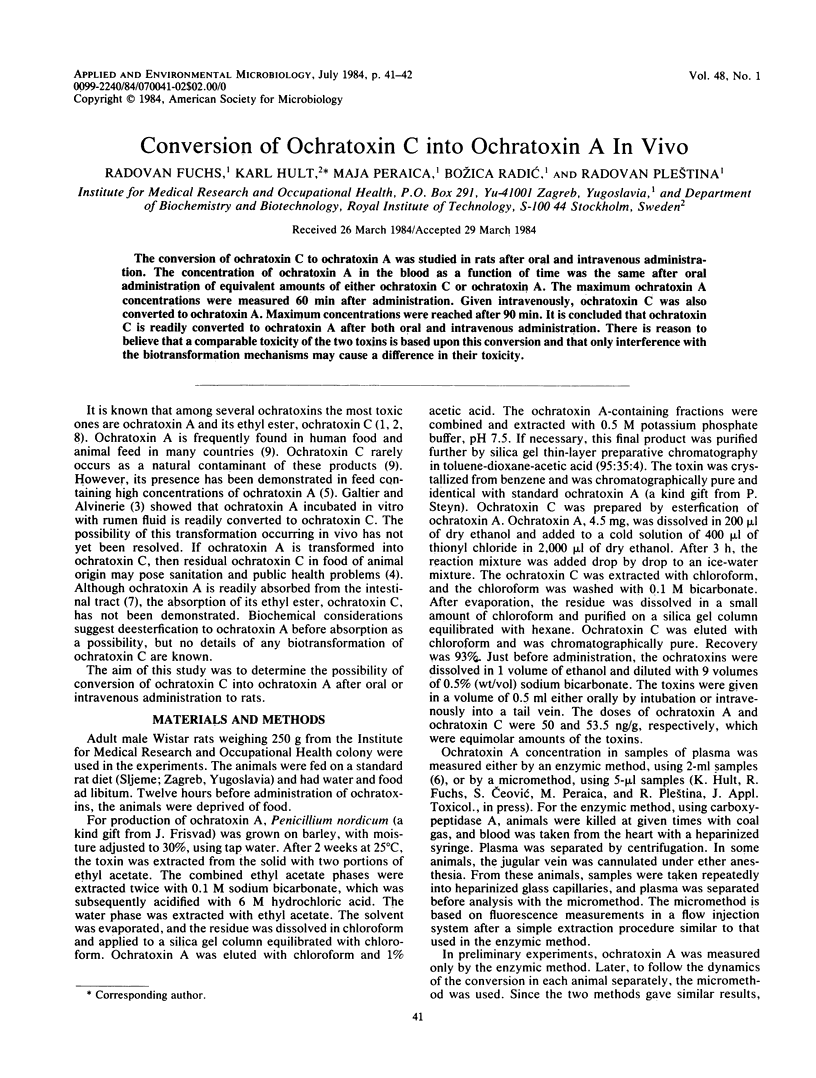Abstract
The conversion of ochratoxin C to ochratoxin A was studied in rats after oral and intravenous administration. The concentration of ochratoxin A in the blood as a function of time was the same after oral administration of equivalent amounts of either ochratoxin C or ochratoxin A. The maximum ochratoxin A concentrations were measured 60 min after administration. Given intravenously, ochratoxin C was also converted to ochratoxin A. Maximum concentrations were reached after 90 min. It is concluded that ochratoxin C is readily converted to ochratoxin A after both oral and intravenous administration. There is reason to believe that a comparable toxicity of the two toxins is based upon this conversion and that only interference with the biotransformation mechanisms may cause a difference in their toxicity.
Full text
PDF

Selected References
These references are in PubMed. This may not be the complete list of references from this article.
- Chu F. S., Chang C. C. Sensitivity of chicks to ochratoxins. J Assoc Off Anal Chem. 1971 Sep;54(5):1032–1034. [PubMed] [Google Scholar]
- Doster R. C., Sinnhuber R. O., Pawlowski N. E. Acute intraperitoneal toxicity of ochratoxin A and B derivatives in rainbow trout (Salmo gairdneri). Food Cosmet Toxicol. 1974 Aug;12(4):499–505. doi: 10.1016/0015-6264(74)90063-7. [DOI] [PubMed] [Google Scholar]
- Galtier P., Alvinerie M., Charpenteau J. L. The pharmacokinetic profiles of ochratoxin A in pigs, rabbits and chickens. Food Cosmet Toxicol. 1981 Dec;19(6):735–738. doi: 10.1016/0015-6264(81)90528-9. [DOI] [PubMed] [Google Scholar]
- Galtier P., Alvinerie M. In vitro transformation of ochratoxin A by animal microbioal floras. Ann Rech Vet. 1976;7(1):91–98. [PubMed] [Google Scholar]
- Hamilton P. B., Huff W. E., Harris J. R., Wyatt R. D. Natural occurrences of ochratoxicosis in poultry. Poult Sci. 1982 Sep;61(9):1832–1841. doi: 10.3382/ps.0611832. [DOI] [PubMed] [Google Scholar]
- Hult K., Hökby E., Hägglund U., Gatenbeck S., Rutqvist L., Sellyey G. Ochratoxin A in pig blood: method of analysis and use as a tool for feed studies. Appl Environ Microbiol. 1979 Nov;38(5):772–776. doi: 10.1128/aem.38.5.772-776.1979. [DOI] [PMC free article] [PubMed] [Google Scholar]


